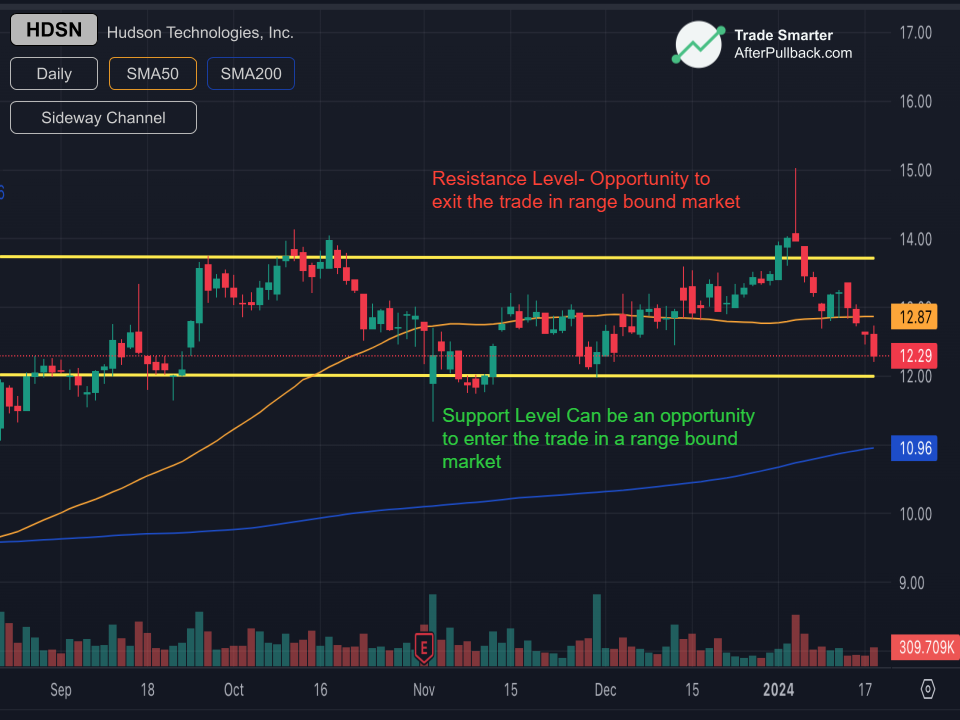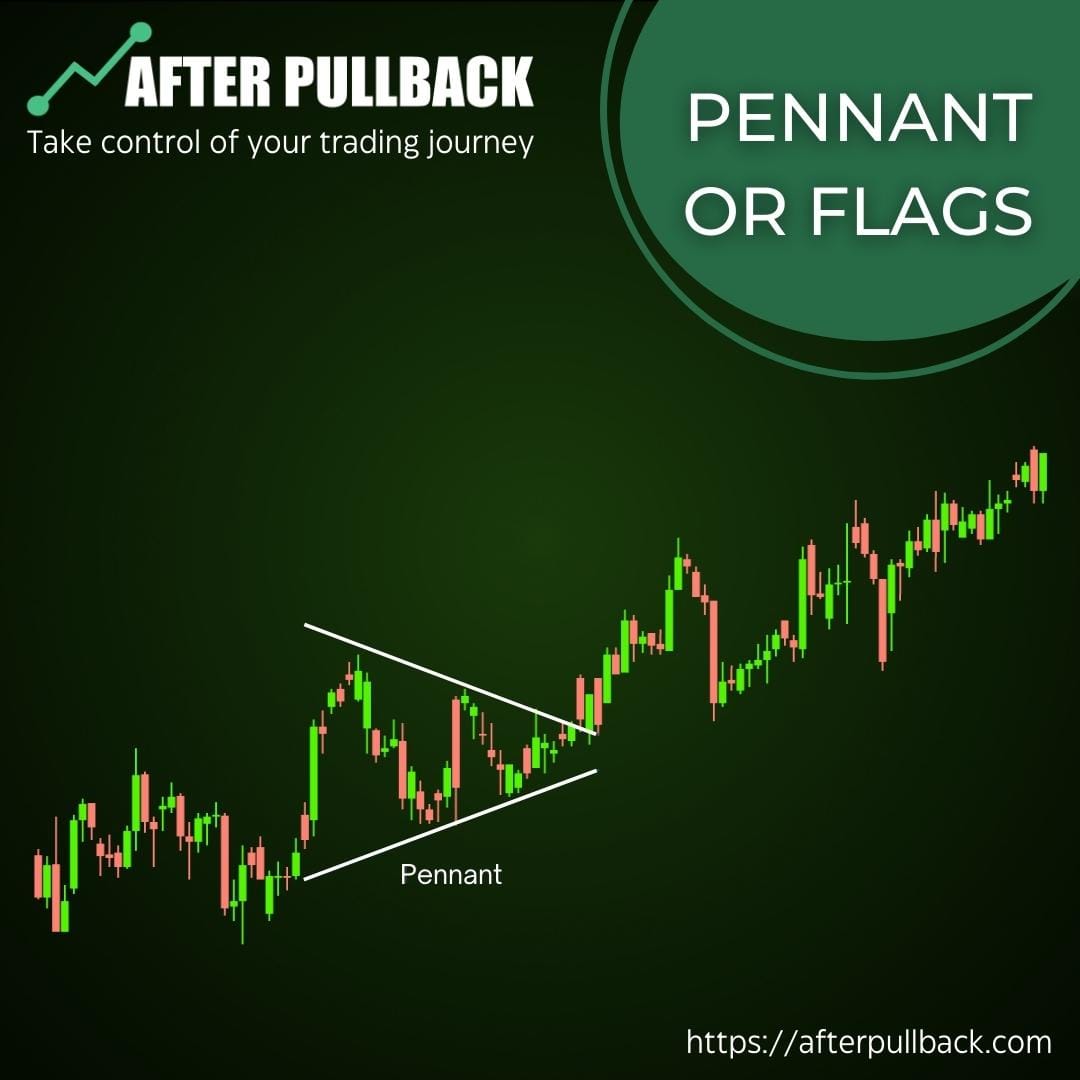Swing Trading-A Comprehensive Guide with Examples

As traders, you may not have the time to dedicate your full attention to your trading charts during the day, as most day traders do, to take benefit of the price fluctuations that are often seen in the market.
At the same time, you may not want to wait for a few years to wait for your chosen stocks to inch upwards
So,
You might wonder If there really is a strategy that fits in between these two approaches.
Yes, It is
It is called “Swing Trading”
Not too fast-paced, not too slow, just right for those who want to capitalize on market movements without being chained to their screens
In the blogpost below, we will discuss everything swing trading and how it be useful to you as we a trader.
Lets Start!
What is Swing Trading?
Swing trading is a speculative trading strategy used in various financial markets like stocks, forex, and commodities. It aims to profit from short-term price movements over a timeframe lasting anywhere from a few days to several weeks.
How does Swing Trading Differs from Day Trading or Investing?

Although we have discussed previously how Swing trading differs with Day trading and Long Term Investing,
Here's a brief of how swing trading stacks up against its counterparts:
Day Trading vs. Swing Trading:
Time Commitment: Day traders make numerous trades within a single trading day. Swing traders, on the other hand, enjoy more flexibility. They analyze the market, identify opportunities, and execute trades, but don't require constant monitoring.
Strategies: Day traders rely heavily on real-time news and market data to exploit fleeting price movements. Swing traders, however, utilize technical analysis tools and chart patterns to identify trends with higher timeframes.
Risk and Reward: Swing trading i offers the potential for higher returns within a shorter time frame compared to day trading.
Swing Trading vs. Long-Term Investing:
Investment Horizon: Long-term investors hold assets for years or even decades, focusing on a company's fundamentals and overall growth potential. Swing traders, while looking for opportunities beyond a single day, have a shorter-term horizon, aiming to capture profits within weeks or months.
Risk and Reward: Long-term investing aims for steady, compounded growth, typically offering lower volatility. Swing trading involves a greater degree of risk in exchange for the potential for higher returns in a shorter period.
Is Swing Trading right for you?
Well, It depends on what kind of a trader are you.
Swing trading can be a good fit for individuals who:
Enjoy Active Management
If you find the research, analysis, and execution of trades stimulating, swing trading offers more engagement than buy-and-hold investing.
It also depends on you Risk Tolerance
Swing trading involves calculated risks, so you should be comfortable with the possibility of short-term losses.
The below last two are also the skills you find in master traders
Similarly, Swing trading can benefit if you Can Commit Time for Analysis. While less demanding than day trading, swing trading requires dedicated time to analyze the market and identify trading opportunities.
And finally, if you Possess Discipline and Patience. Sticking to your trading plan and avoiding emotional decisions are crucial for swing trading success.
What are the Ideal markets for Swing Trading?
So,
You have got those above traits as a trader? Then let's select some markets for your swing trading strategies.
See, The playground for a swing trader is vast, encompassing various asset classes with unique characteristics. Some popular options include:
Number 1: Stocks

Stocks might be your go-to choice in swing trading for a few reasons.
First up, there's "liquidity." you can jump in and out of positions quickly without a major hassle, which is crucial for a swing trader. Some Stocks also tend to be quite "volatile," meaning their prices fluctuate within your timeframe. This back-and-forth movement creates opportunities to potentially profit from both uptrends and downtrends.
Another big perk is the wealth of information available for public companies. Annual reports, news articles, analyst ratings – it's all there for you to dig into. This intel can be a powerful tool alongside your technical analysis when making trading decisions.
And
What else can be better than buying near support and selling near resistance. Sweet, right?
Many stocks also experience periods of consolidation, where the price bounces between a defined range. These "range-bound movements" offer predictable support and resistance levels.
The beauty of stocks doesn't stop there.
The vast selection of companies across various industries allows you to tailor your swing trading strategies and spread your risk.
Plus,
stock markets operate under established regulations, offering a level of security and transparency compared to some other markets.
So, if you're looking for a market with good liquidity, volatility, information access, and a range of options, then stocks might just be your swing trading sweet spot.
Number 2:Forex (Foreign Exchange):

Alright,
forex (foreign exchange) can be another fantastic arena for swing traders, and for entirely different reasons.
First off, unlike stock exchanges with set trading hours, forex operates 24/7, offering you, the swing trader, incredible "flexibility." So, For example, If a news break about a political event that might impact a specific currency – with forex, you can react to these global happenings even outside traditional stock market hours.
Another advantage of forex is "leverage," Forex brokers often allow you to control a larger position size than your actual capital. This means you can potentially magnify your profits, but also magnify your losses. So, wielding leverage requires a well-defined risk management strategy and a cool head.
On the flip side, forex transactions typically involve "spreads" (the difference between the buying and selling price) instead of commissions you might pay on stock trades. This can make forex a more cost-effective option for swing traders who make fewer trades but hold positions for a longer duration.
So, if you're a swing trader who thrives on flexibility, wants to explore leverage cautiously, and enjoys incorporating global events into your trading strategy, then forex might be the perfect market for you to conquer.
Number 3: Commodities

Firstly, compared to stocks, commodity prices tend to be more "volatile" due to factors like surprise weather events or geopolitical tensions. For example, a sudden disruption in the global oil supply chain – can cause oil prices to swing wildly, creating potential opportunities for swing traders who can identify these trends and capitalize on them.
Understanding the bigger economic picture is crucial for profiting in commodities. Swing traders with a keen eye on "macroeconomic trends," like inflation or industrial output, can use this knowledge to make informed decisions. For instance, if a swing trader anticipates a rise in global steel production due to infrastructure projects in developing countries, they might buy steel futures contracts (agreements to buy steel at a specific price in the future) in anticipation of a price increase.
Here's another exciting aspect of commodities – some exhibit "seasonal trends." Think corn prices typically rising around harvest season. Swing traders can leverage this knowledge by identifying potential entry and exit points based on these predictable seasonal patterns.
Trending or Range Bound -Which market is better for Swing Trading?
Both trending and range-bound markets can be good for swing trading, but they favor different approaches:

Trending Markets exhibit a consistent upward or downward movement over time. Swing traders aim to "ride the wave" by buying low in uptrends and selling high in downtrends. Technical analysis plays a key role in identifying trends and potential entry/exit points.
On the other hand,

Ranging Markets, characterized by price movements within a defined band, can still offer opportunities. Swing traders can employ strategies like buying near support levels (areas where the price tends to bounce back) and selling near resistance levels (areas where the price tends to decline).
Fundamental vs. Technical Analysis: Which One Do Swing Traders Need?

The answer is neither "one" nor "the other," but rather a strategic blend of complementary tools. Let's discuss the strengths of each approach:
Fundamental Analysis
Fundamental analysis focuses on the underlying factors that influence a security's long-term value. Swing traders who utilize this approach examine;
Company Fundamentals (for Stocks): Understanding a company's financial health, future prospects, and industry trends can provide valuable context for your technical analysis.
&
Economic Data (for Forex & Commodities): Economic indicators like interest rates, inflation data, and GDP growth can influence currency valuations and commodity prices. By keeping an eye on these factors, you can gain a broader perspective on potential price movements.
Fundamental Analysis is important, even if the current price might not fully reflect this value.
For instance, a swing trader might use fundamental analysis to discover a company with a revolutionary new product launch on the horizon. While the stock price might be stagnant currently, the upcoming product release could signal a potential upswing in the future.
Technical Analysis:
Technical analysis, on the other hand, focuses on the historical price movements and chart patterns of security. Swing traders use Stock Scanners to use technical indicators Like Moving Averages, Relative Strength Index, Stochastic Oscillator, Moving Average Convergence Divergence (MACD) and Bollinger Bands to identify trends, support and resistance levels, and potential entry and exit points. This analysis helps them capitalize on short-term price movements within a defined timeframe.
For Example, Let's say, you are a swing trader analyzing the chart of a stock and noticing a bullish flag pattern forming. This technical pattern often indicates a potential breakout and price surge.

So,
What you can do is to leverage this information to enter a trade before the breakout, aiming to capture some of the potential gains.
The Power of Combining Forces
While both approaches offer valuable insights, their strengths lie in working together.
Fundamental analysis can provide context for technical signals. For example, a strong earnings report might serve as confirmation for a bullish technical pattern identified on the chart.
How to develop your own Swing Trading Strategy?
Alright,
So now we know that swing trading can present loads of opportunities for you as a trader.
But how do you exactly take the benefit from it?
Here's a step-by-step process to guide you in developing your own swing trading strategy:
Step 1: Know Yourself – Trading Style and Risk Tolerance
First things first, identify your risk tolerance and preferred trading style. Are you a trend follower capitalizing on directional moves, or do you prefer the predictability of range-bound markets?
You also need to define your Risk Tolerance. How comfortable are you with potential losses? This will influence your position sizi and risk management strategies.
Step 2: Choose Your Market
Next, choose a market that aligns with your goals.
Stocks offer a familiar landscape with plenty of information, forex boasts 24/7 access and potential leverage (use wisely!), and commodities can be exciting but more volatile due to global events and seasonal swings (be mindful of margin requirements and storage costs if dealing with physical commodities).
Step 3: Use Fundamental and Technical Analysis
Now, equip yourself with the necessary tools – a fundamental understanding of "why" prices move (company health, industry trends, economic conditions) and technical analysis to understand the "how" (chart patterns, indicators, support/resistance levels). You can use the Common Indicators like Moving Averages , RSI and Bollinger Bands or you can also use some “not so common” indicators like Probability Cones as an indicator in swing trading as well.
Step 4: Define Entry and Exit Signals
For Entry Signals, Identify conditions that trigger your entry into a trade, based on your chosen analysis methods. You can use your price action scanners to identify the entry points through methods such as support and resistance, or by identifying breakouts.
For example, if you are following a Trend Following strategy, A breakout above a key resistance level might signal your entry for a long trade (buying). You can also employ methods such as identifying gap ups and gap down to find entry signals.
Similarly,
For Exit Signals, you need to determine when to exit a trade to secure profits or limit losses. Experienced traders may use methods like volume confirmation or overbought and oversold conditions to identify the exit signals.
However,
These are not the only exit signals. The exit signals can also be based on moving averages, Reversal Patterns, or on support and resistance levels among many others.
For example, if you are trading a Range-Bound market, Exiting near resistance levels when the price reaches the upper boundary of the range might be a good idea.
Step 5: Never Forget Risk Management
Risk management is your essential shield in trading. Always set stop-loss orders to automate exiting a trade if the price moves against you, and practice smart position sizing by allocating a specific percentage of your capital to each trade to avoid overexposure.
Psychological Aspects of Swing Trading
Swing trading, despite offering more breathing room than day trading, presents its own unique psychological challenges.
One of those common psychological pitfalls is, Patience!
You see, unlike day traders who can close the trades in a single day, swing traders need patience. They might hold positions for days or weeks, waiting for their strategy to unfold. Resisting the urge to jump in and out of trades based on short-term noise is crucial.
Yeah, Discipline IS important. Sticking to your predefined entry and exit signals is essential. Don't let emotions like fear or greed cloud your judgment and lead you to deviate from your strategy.
&
how do you deal with those unrealized profits? Swing traders might see their profits fluctuate significantly before they exit a trade. stock price rising steadily after your entry, then retracing before continuing its climb. This back-and-forth movement can be emotionally taxing giving rise to emotions like,
Fear of Missing Out (FOMO). The market might experience explosive moves while you're holding a position. While it's tempting to chase these hot trends, remember your strategy and avoid impulsive decisions. There will always be other opportunities.
It is super important to have Confidence in Your Analysis. Developing a strong foundation in fundamental and technical analysis builds confidence in your trading decisions. Backtesting your strategy on historical data and paper trading can further solidify your trust in your approach.
The point here to note is
Wins and losses are inevitable. Don't let emotions dictate your trading decisions. Learn from your experiences, adjust your strategy as needed, and move forward with a clear head.
Its all about Maintaining Perspective!
Don't get caught up in the daily grind of watching charts. Focus on the bigger picture and the long-term goals of your swing trading strategy.
A Detailed Example of Swing Trading
Alright,
So now, you must have got a fundamental understanding of Swing Trading; Lets clear everything with a detailed example;
Let's say, you're a swing trader with a focus on healthcare stocks. You come across a pharmaceutical company (BioPharm) developing a new cancer treatment in late-stage clinical trials. Initial trials have shown promising results, and positive news about a potential FDA approval is expected in the coming months.
While the news is encouraging, you decide to dig deeper and do some Fundamental Analysis. You discover BioPharm has a solid financial runway and a proven track record of bringing drugs to market. However, you also learn about a competitor with a similar treatment in the pipeline. This competition could impact BioPharm's potential market share.
You add BioPharm to your watchlist and analyze its price chart for Technical Analysis. The stock has been in a steady uptrend for the past few months, but recently encountered resistance around $75. The MACD indicator also shows some signs of weakening momentum.
So,
How do you develop your Trade Strategy?
Given the mixed picture, you devise a cautious swing trade strategy:
Entry: You'll consider a long trade (buying) only if there's a strong breakout above the resistance level at $75 with good volume. This could signal increased buying pressure and a continuation of the uptrend.
Exit: You'll set a profit target of $85 (approximately 13% upside) to capitalize on the positive FDA news anticipation. Additionally, you'll place a stop-loss order below the recent swing low of $68 to limit potential losses if the competitor's news overshadows BioPharm's.
Risk Management: Following your risk management principles, you'll only allocate 1% of your capital to this trade due to the uncertainty surrounding the competitor.
This can be a fruitful strategy for you,
For example, A week later, positive news leaks about BioPharm's potential FDA approval. The stock price surges, decisively breaking above $75 with high trading volume. You execute your long trade at $78 and once the price reaches your target price, you take profit and exit the trade.
But Wait!
May the story not end well like this, there can be an altogether new scenario as well
While Monitoring the price for Potential Outcomes, you notice that The price of BioPharm initially climbs towards your profit target, but then stalls as news breaks about the competitor's treatment also showing promising results in trials. The sentiment shifts, and BioPharm's price starts to decline.
So what you do?
You Adapt Your Strategy
Recognizing the changing market dynamics, you decide to exit the trade early to avoid potential losses exceeding your stop-loss. You sell your shares at $72, taking a small loss of around 7.7%.
This is called Learning from the Experience. While the trade resulted in a loss, it highlights the importance of flexibility and adapting your strategy based on new information.
This example showcases how swing traders navigate real-world scenarios. It emphasizes the importance of combining technical and fundamental analysis to identify potential opportunities while acknowledging the ever-present element of risk.
Alright,
So this pretty much sums up our blog for today. This knowledge should help you lay the foundation of a solid trading Journey and
Trade Smarter!





